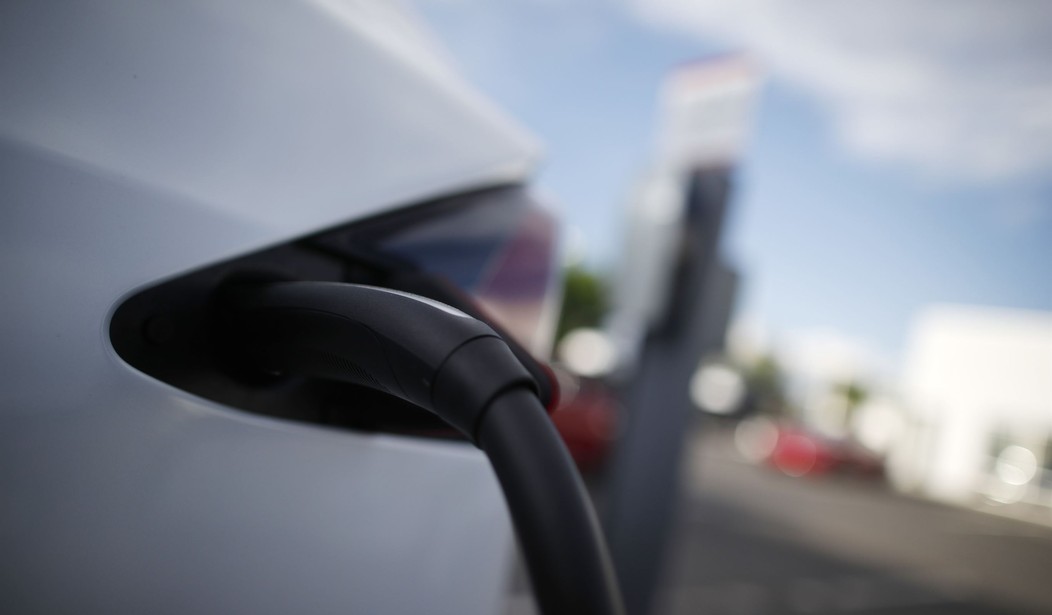That’s beginning be a bit more than just a hypothetical anymore. Nothing is more terrifying than a ship-board fire – now imagine one you can’t fight.
On Wednesday, reports started flooding in that a cargo ship, the Freemantle Highway, was ablaze in the shipping channels 17 miles off an island on the coast of the Netherlands. There were reportedly 3000 cars aboard, 25 of those EVs, and they were being transported from Germany to Egypt.
The crew fought to contain the fire as best they could, but it quickly blazed out of control, eventually costing one crew member his life, with dozens more injured.
The race is on to prevent the sinking of a cargo ship off the Dutch coast which is carrying almost 3,000 vehicles, including 350 Mercedes-Benz, as it burns out of control with an electric car believed to be behind the deadly fire.
At least one crew member died and others were injured after fire ripped through the Fremantle Highway, a 18,500-ton car-carrying vessel. Rescue helicopters and boats evacuated 23 crew members from the Panamanian-registered ship.
Officials have said there are ‘many’ wounded. Some suffered broken bones, burns and breathing problems and were taken to hospitals in the northern Netherlands, emergency officials said.
Seven crew members jumped overboard and were rescued from the water, while the rest were airlifted by helicopter. Dutch broadcaster NOS reported that all the crew were Indian.
This afternoon, the ship was said to be burning out of control in the North Sea and rescue vessels were working to save it from sinking close to one of the world’s most important migratory bird habitats.
…’Around midnight the Coast Guard received a report that the Fremantle Highway is on fire,’ the Dutch coastguard said earlier on Wednesday.
‘The crew tried to put out the fire themselves, but failed. Unfortunately one person died and several others were injured.’
Dutch maritime authorities towed the fiery vessel out of shipping lanes so it wouldn’t endanger any other vessels in those truly busy waters and then stood watch. Fire boats kept pouring jets of ocean on and into the vessel, and crews were standing by who would eventually be trying to extinguish the inferno.
…Early this afternoon, two ships were alongside the freighter hosing down its sides in an attempt to cool them, the coast guard said, but firefighters were still unable to attempt to extinguish flames on the ship and smoke was billowing out of its hold.
Initially there had been a report that the fire had started in one of the few EVs being transported. But there was some question about that, which is also one reason why, when I started a post on this Wednesday, I didn’t finish it. I wanted to see what they found out.
What a difference a couple days make for clarity.
For one thing, it turns out the number of EVs onboard the Freemantle Highway? TWENTY TIMES MORE than initially reported. There were 498 EVs onboard as opposed to 25, for a total of 800 more cars overall in the cargo.
HOLY SMOKES
That’s quite an update.
There was clarification of a sort with the release on Dutch radio of a call from one of the first responders to get to the vessel:
…The Dutch Coastguard is still officially referring to the cause of the fire as unknown, however, Dutch broadcaster RTL released an audio recording Thursday in which an emergency responder can be heard saying “the fire started in the battery of an electric car,” according to Reuters.
Of course the Coast Guard has to be more circumspect, and can’t make an affirmative declaration without an investigation, but one thing is for certain – whatever the offcial cause of the fire, the cumulative incendiary effect of 500 EV lithium batteries ablaze vs the initial 25 they thought they were dealing with had to be disheartening for their efforts.
…Whether EVs had anything to do with precipitating the blaze, the number on board is relevant to what’s likely to be a days-long effort to put it out. Lithium-ion battery fires burn hotter and last longer than gasoline. They can also be difficult to extinguish, sometimes reigniting hours or days after seemingly having been put out.
The fire was still ablaze with the situation stable as of Friday
Oh, yes – the Freemantle is still burning.
According to an unnamed K Line spokesperson in Tokyo quoted by Reuters, there were 3,783 vehicles on the Freemantle Highway, including 498 EVs.#FremantleHighwayhttps://t.co/2GQE31Wbaq
— Astrid Lavalette 🕊️ (@LavaletteAstrid) July 28, 2023
And where it’s drifting as it burns – with the possibility of sinking – is also causing a great deal of concern.
…The 199-meter (653 ft) Fremantle is drifting among islands about 17 km from the northernmost Dutch coast. It was on the way from Germany to Egypt. The islands comprise part of the Wadden Sea, a vast area of tidal flats and marshland stretching along Germany and Denmark that is on UNESCO’s World Heritage list.
This seagoing calamity is stirring up memories of a catastrophic ship’s fire a little over a year ago, aboard the Felicity Ace. She was carrying 4000 luxury cars – Audis, Porsches, Bentleys, rarities, special orders – along with EVs, and that voyage ended when the ship sank after the fire could not be extinguished.
Even though no culpability for the fire could be assigned, without question the batteries of the EVs caused the fire to rage out of control and become unmanageable almost immediately.
Lithium-ion batteries are fueling the fire on a burning cargo ship full of Porsches
The cargo ship Felicity Ace is aflame from bow to stern with a lithium-ion battery fire that can’t be put out with water alone.
The fire has been burning since Wednesday (Feb. 16), as the ship drifts in the Atlantic about 200 miles southwest of Portugal’s Azores Islands. Its 22-person crew abandoned ship and was rescued on Thursday.
…On Saturday, João Mendes Cabeças, captain of the port of Faial, the nearest Azorean island, told Reuters that the batteries in the ship’s cargo are “keeping the fire alive.” Cabeças added that reinforcements with specialist equipment to extinguish the fire were on their way. At the time of the interview, the fire hadn’t reached the ship’s fuel tank, but was closing in.
Large quantities of dry chemicals are needed to smother lithium ion battery fires, which burn hotter and release noxious gases in the process.
Pouring water onto the Felicity Ace wouldn’t put out a lithium-ion battery fire, Cabeças told Reuters, and the added water weight could make the ship more unstable.
Water, water, everywhere…and it doesn’t do you a lick of good. If you think a garage going up is bad, imagine being these poor guys 200 mi in the middle of the Atlantic.
The Felicity Ace was reportedly a $500M loss and, thanks to that sinking, maritime transport companies starting becoming harder to procure for shipping EVs.
…The cause of the fire is still unclear. After the incident, electric vehicles onboard were widely suspected as the culprit that contributed to the intensity of the blaze. As a result, some auto shipping companies have since refused to transport used EVs, opting to lose that business instead of risking a potentially devastating fire.
There’s also starting to be talk about what these fires will do to the maritime insurance market. That shipping insurance is based on some expectation the your crew would be able to get all but the most catastrophic of blazes under control. When the lithium batteries light off, the crew doesn’t stand a chance, whether the EV itself was the original source of the fire or not. That premium is also based on risk.
Interesting that the fire can't be fought – EVs will do that. My husband has speculated that a ship carrying EVs may not be able to get insurance to carry EVs due to the fire hazard. This may mean that EVs built overseas may not be able to get to the U.S. https://t.co/bpddteLwQF
— poligrrl (@PoliGrrl) July 28, 2023
What does that do to imports of EVs and our exports if insurance starts drying up?

Insurance companies are also prickly about taking repeated, massive losses in one blow.
The Freemantle highway smoldering just off the Netherlands right now is going to do nothing for that market, especially if it also turns into an ecological nightmare.








Join the conversation as a VIP Member